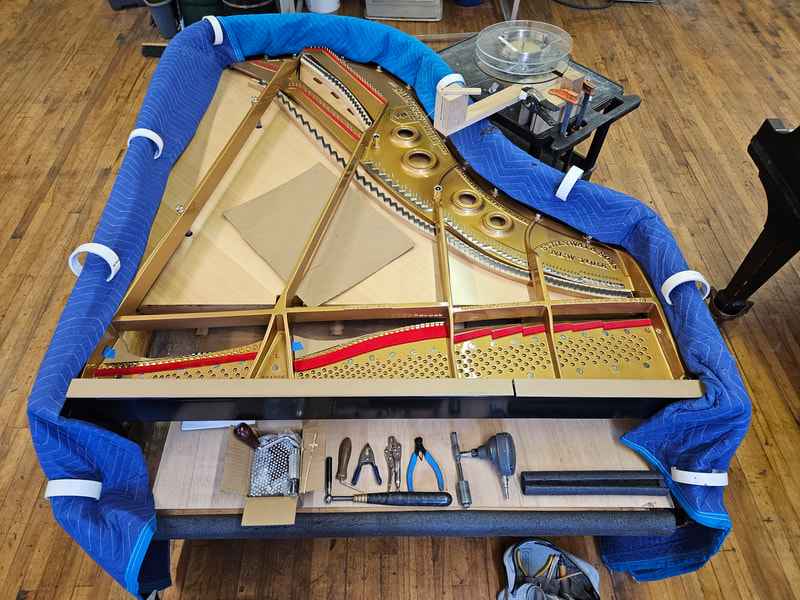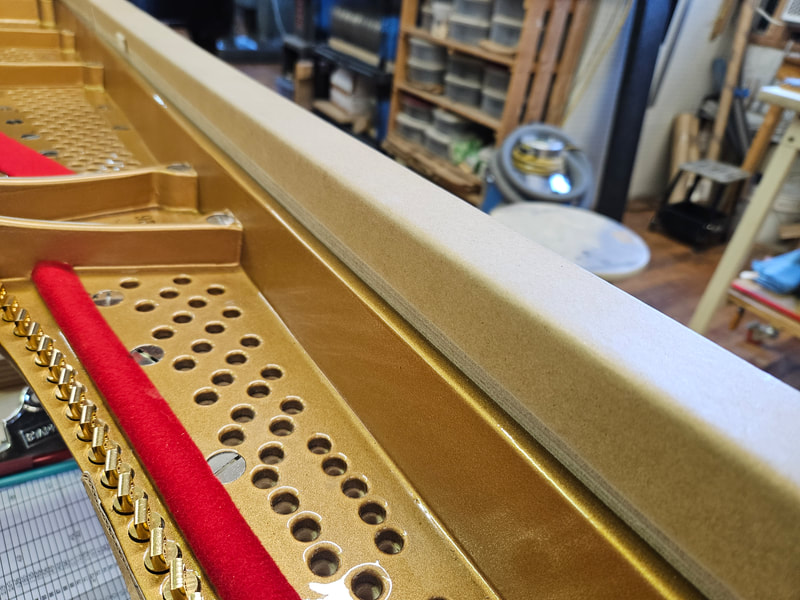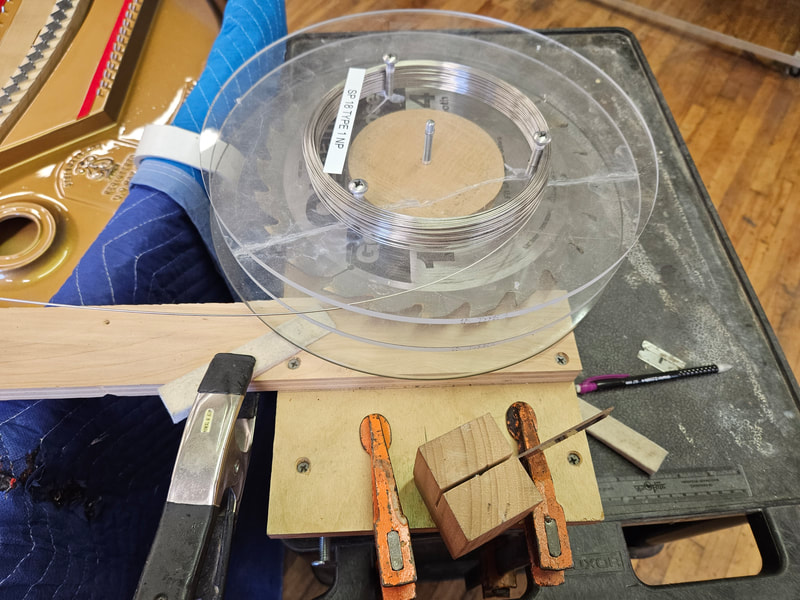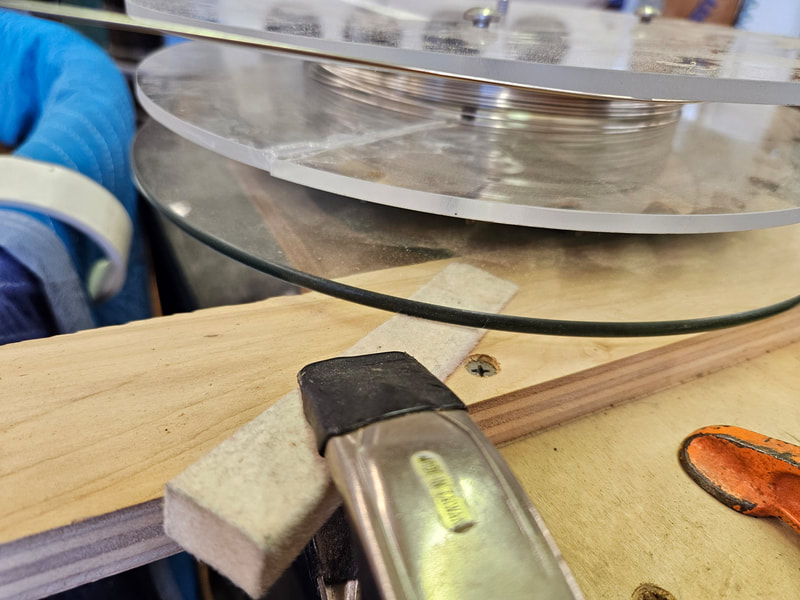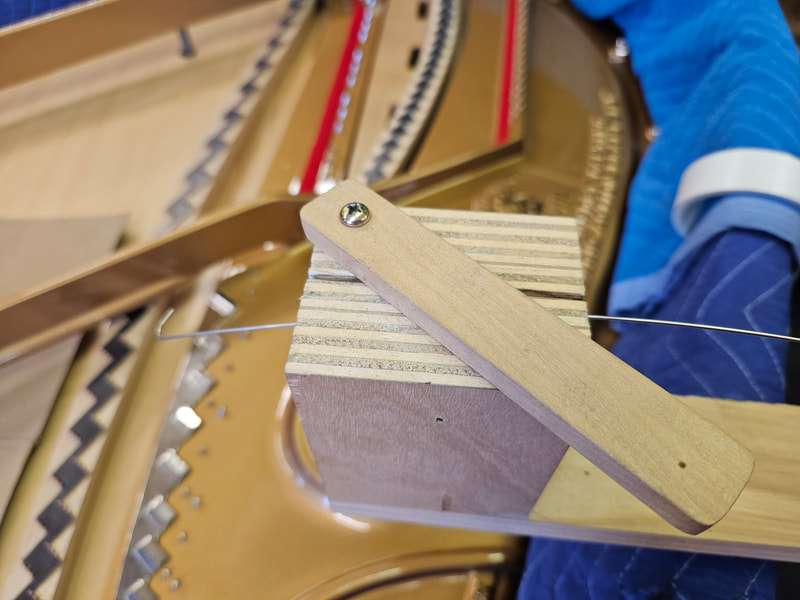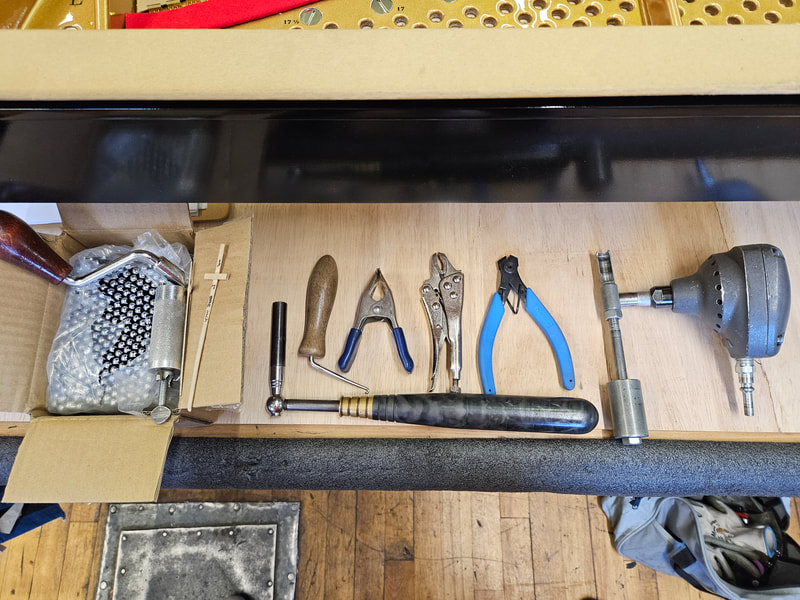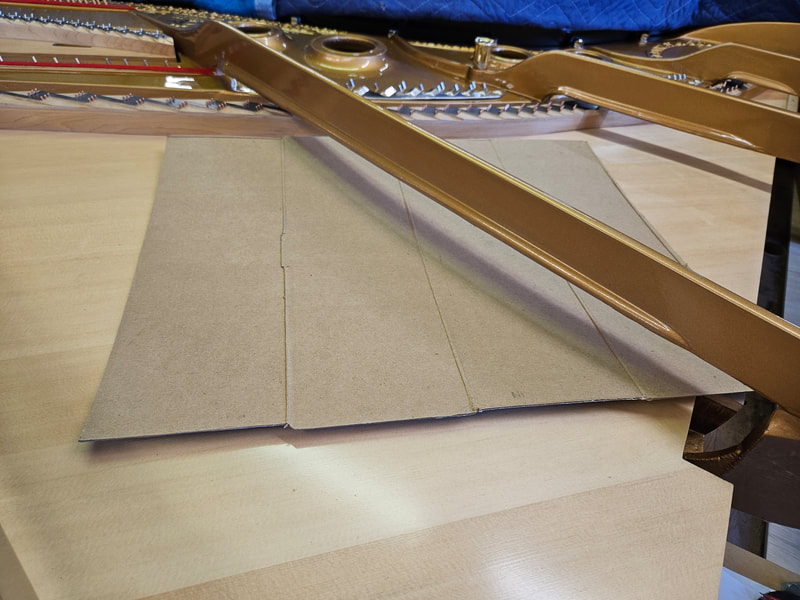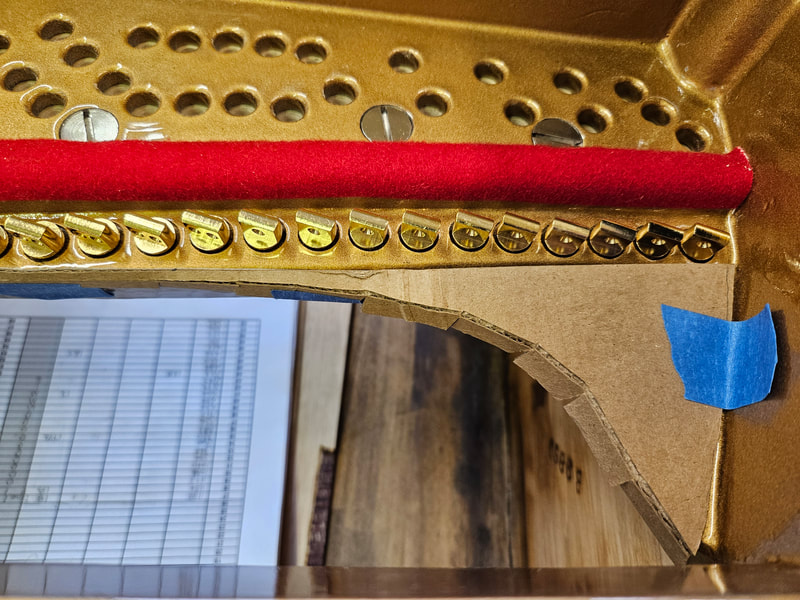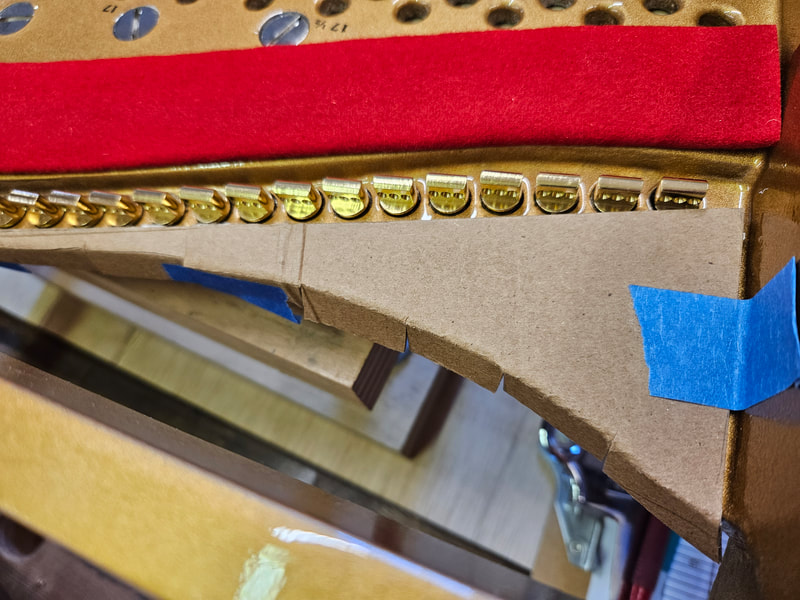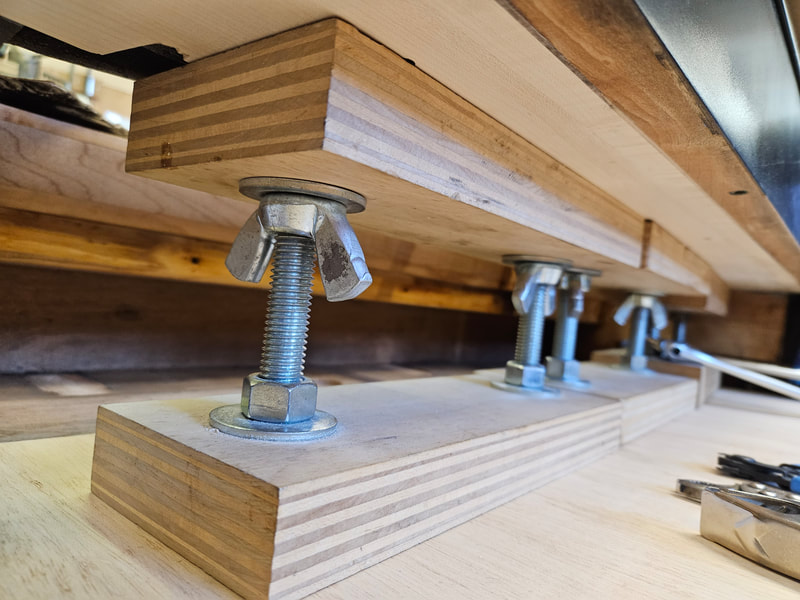|
The preparation takes about an hour yet it is essential for a good stringing job without much damage on the piano case. First, the top surface is covered by blankets and cardboards for protection. The little rings to fasten blankets are chopped from PVC pipes. The spool holder is homemade, mounted on a rolling cart which can move freely around piano. The spool spins on an axis to unwind strings. The strings go through a little cut off on a plywood with a rotatable top (last picture) to prevent it from flying everywhere. In order not to let the spool spin too freely, a felt wedge (second and third picture) is clamped under the spool to add friction. If the spool spins freely, the strings will quickly unwind into a huge mess. The shop owner added a tablesaw blade under the spool (fourth picture) and a piece of plastic as a ratchet. The purpose is also to add friction to the spool, instead of that felt wedge. It does not work well for me, but it is totally personal. A long pool noodle is sliced to make a keybed edge guard since the stringing tools are mostly metal, may ding the case easily. While the noodle is in place, might as well organize all tools and tuning pins needed for the job. A piece of cardboard is placed on soundboard to prevent scratches from strings. It is a flattened box. The creases on it allow the cardboard to be bent and be removed easily from under strings. On the plate where strings can cause scratches, thin cardboards are also taped as guards. Finally, pinblock supports are jacked up to hold the pinblock while tuning pins are being pounded down. Given all the heavy pounding, the pinblock will crack without them. This is it. The piano is ready for some strings.
Comments are closed.
|
Archives
May 2024
|
